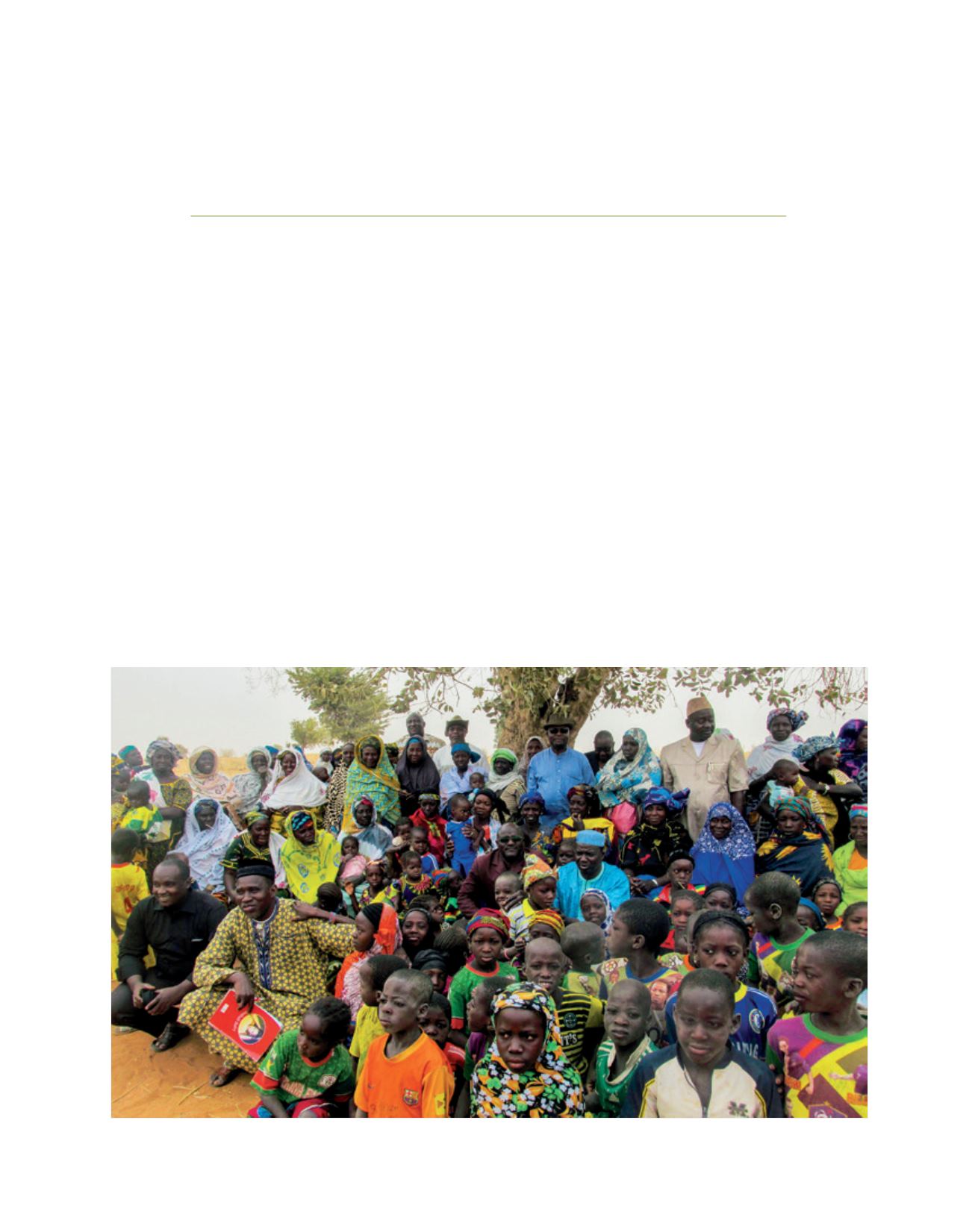

[
] 29
Reclamation and sustainable development
of degraded lands in the Niger basin
Seyni Seydou, Project Coordinator, Niger Basin Authority and Laouali Garba,
Principal Environment Officer, African Development Bank
T
he catchment area of the Niger River covers 2.2
million km² (with an active basin of 1.5 million
km²), crossing four agroclimatic zones successively
in nine West and Central African countries: Benin, Burkina
Faso, Cameroon, Chad, Côte d’Ivoire, Guinea, Mali, Niger
and Nigeria. The entire basin is characterized by a general-
ized degradation of its natural resources and it is affected
to varying degrees by water and wind erosion and siltation.
In this highly differentiated bioclimatic context lives a popu-
lation estimated at 113 million inhabitants in 2005, more
than half of the population of the nine countries of the Niger
basin. The Niger River is therefore of vital importance to the
socioeconomic advancement for the nine basin countries. The
realization off this is unfortunately compromised by climatic
and anthropogenic factors.
Four parallel stripes are commonly distinguished in the
climate from south to north of the basin. These are the
humid tropic zone, with over 1,200 mm of average annual
rainfall; the subtropical zone in the dry season, called the
‘Sudanian zone’, with an average annual rainfall between 800
and 1,200 mm; the long dry season subtropical zone, called
‘Sahel’, with an average annual rainfall between 100 and 800
mm; and the subtropical desert, called ‘Sahara’, with very
irregular or near absent annual rainfall of less than 100 mm.
The physical and chemical constitution of the geological
bedrock of the Niger basin is the basis of arenization and
sand. Transported and deposited by water and wind paths,
it is the major cause of the silting up of the Niger River.
The climate is the main factor in the production of sand
by dissolving rocks with moisture, through their cracking
with temperature differences, by their disintegration (soil)
Image: AfDB
An awareness session in Sembé village, Mali
L
iving
L
and
















